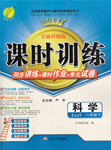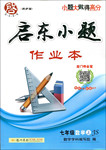题目内容
Take a look at the following list of numbers: 4, 8, 5, 3, 7, 9, 6. Read them loud. Now look away and spend 20 seconds memorizing them in order before saying them out loud again. If you speak English, you have about a 50% chance of remembering those perfectly. If you are Chinese, though, you’re almost certain to get it right every time. Why is that? Because we most easily memorize whatever we can say or read within a two-second period. And unlike English, the Chinese language allows them to fit all those seven numbers into two seconds.
That example comes from Stanislas Dahaene’s book The Number Sense. As Dahaene explains: Chinese number words are remarkably brief. Most of them can be spoken out in less than one-quarter of a second (for instance, 4 is “si” and 7 “qi”). Their English pronunciations are longer. The memory gap between English and Chinese apparently is entirely due to this difference in length.
It turns out that there is also a big difference in how number-naming systems in Western and Asian languages are constructed. In English, we say fourteen, sixteen, seventeen, eighteen and nineteen, so one might expect that we would also say oneteen, twoteen, threeteen, and fiveteen. But we don’t. We use a different form: eleven, twelve, thirteen and fifteen. For numbers above 20, we put the “decade” first and the unit number second (twenty-one, twenty-two), while for the teens, we do it the other way around (fourteen, seventeen, eighteen). The number system in English is highly irregular. Not so in China, Japan, and Korea. They have a logical counting system. Eleven is ten-one. Twelve is ten-two. Twenty-four is two-tens-four and so on.
That difference means that Asian children learn to count much faster than American children. Four-year-old Chinese children can count, on average, to 40. American children at that age can count only to 15. By the age of five, in other words, American children are already a year behind their Asian friends in the most fundamental of math skills.
The regularity of their number system also means that Asian children can perform basic functions, such as addition, far more easily. Ask an English-speaking seven-year-old to add thirty-seven plus twenty-two in her head, and she has to change the words to numbers (37+22). Only then can she do the math: 2 plus 7 is 9 and 30 and 20 is 50, which makes 59. Ask an Asian child to add three-tens-seven and two-tens-two, and then the necessary equation(等式) is right there, in the sentence. No number translation is necessary: it’s five-tens-nine.
When it comes to math, in other words, Asians have a built-in advantage. For years, students from China, South Korea, and Japan --- outperformed their Western classmates at mathematics, and the typical assumption is that it has something to do with a kind of Asian talent for math. The differences between the number systems in the East and the West suggest something very different --- that being good at math may also be rooted in a group’s culture.
1.What does the passage mainly talk about?
A. The Asian number-naming system helps grasp advanced math skills better.
B. Western culture fail to provide their children with adequate number knowledge.
C. Children in Western countries have to learn by heart the learning things.
D. Asian children’s advantage in math may be sourced from their culture.
2.What makes a Chinese easier to remember a list of numbers than an American?
A. Their understanding of numbers.
B. Their mother tongue.
C. Their math education.
D. Their different IQ.
3.Asian children can reach answers in basic math functions more quickly because ____________.
A. they pronounce the numbers in a shorter period
B. they practice math from an early age
C. English speaking children translate language into numbers first
D. American children can only count to 15 at the age of four
1.D2.B3.C
【解析】略

 课时训练江苏人民出版社系列答案
课时训练江苏人民出版社系列答案 黄冈经典趣味课堂系列答案
黄冈经典趣味课堂系列答案 启东小题作业本系列答案
启东小题作业本系列答案“ I’d like to be at a healthier weight , ” a friend told me . “ But we just don’t have the money to buy expensive diet foods and there isn’t enough money to join a gym .” Many people feel that way—that a healthy diet and exercise plan is out of reach because of their high cost . Don’t lose hope ! We’ll be looking at ways to make healthy choices without spending too much money .
First you don’t need to buy the expensive pre-prepared “ diet foods . ” Back in the early 1970s when I started housekeeping , 90% of the food I bought was ingredients . Very few things were preprocessed(预处理的). Now 90% of the food you find in the store is quick food . That’s a bad thing .
Quick foods like boxed “ just add hamburger ” meals have had the fiber removed to make them faster to prepare . Take a look at the label on that box . It often has low numbers listed under “ fiber ” because fiber takes longer to digest . If the low fiber meal is digested , the result is that your body begins to store fat . Besides , your body is short of nutrients(营养物质). You will be driven to eat more to try to make up for the low quality of the food you are eating .
And then there are the chemicals the producers add to the quick meals to make them palatable . If not , the stuff would taste like cardboard and you wouldn’t enjoy it . However , these chemicals certainly aren’t good for your health .
What’s the answer ? Buy whole ingredients and give up the expensive , low nutrition , processed foods . Do the cooking yourself and you will have control over what is in your food —and it will cost less , too .
1.People who find it hard to get a healthier weight think .
|
A.they had too much diet foods |
|
B.they didn’t make a detailed plan |
|
C.they have no time to do exercise in gym |
|
D.they can’t afford diet foods and to exercise in gym |
2. The author doesn’t like quick food mainly because .
|
A.it contains too much fat |
B.it makes people eat less |
|
C.it has low fiber |
D.it takes longer to digest |
3.The underlined word “ palatable ” in Paragraph 4 probably means “ ”.
|
A.fresh |
B.delicious |
C.healthy |
D.simple |
4.The author suggests in the text that people should .
|
A.control the amount of food |
|
B.eat more processed foods |
|
C.cook food for themselves |
|
D.choose cheap ingredients |
5.Which of the following best shows the structure of the passage ? (①="Paragraph" 1,
②="Paragraph" 2 ,…⑤="Paragraph" 5)
|
A.①/②③④/⑤ |
B.①②/③④/⑤ |
C.①②③/④/⑤ |
D.①/②③/④⑤ |

